1.5: Artemis
( \newcommand{\kernel}{\mathrm{null}\,}\)
Roman name: Diana
Epithets: Potnia Therōn (Mistress of Wild Beasts)
Symbols: bow and arrow, quiver, hunting dogs, deer and other animals, fawn skin
Goddess of hunt, wild animals (especially baby animals), childbirth. The Romans conflated Diana with the Greek goddess of the moon, Selene (just as they identified Apollo with Helius, the Greek god of the sun).
Birth of Artemis
Artemis was the twin sister to Apollo and was the daughter of Zeus and Leto [see Apollo]. Both Apollo and Artemis took revenge against anyone who attempted to harm their mother. Apollo and Artemis slew the giant Tityus and killed the children of the mortal woman Niobe [see Apollo].
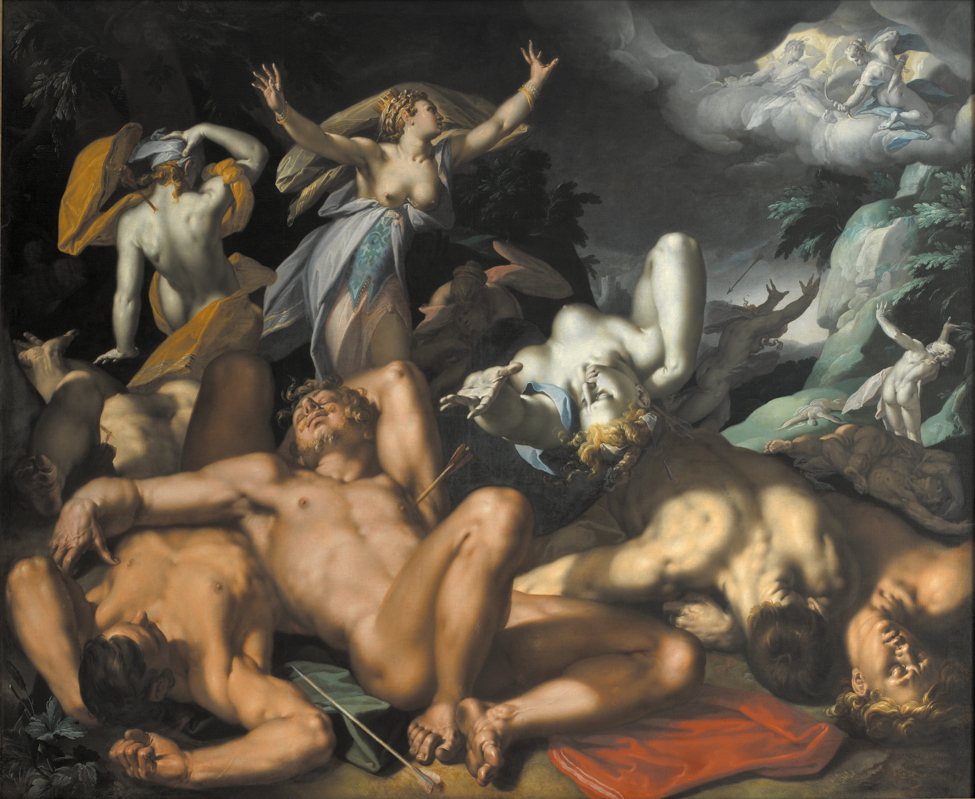
Apollo and Diana Punishing Niobe by Killing her Children by Abraham Bloemaert (1591) found in the National Gallery of Denmark in Copenhagen
Artemis’ Cruelty: Callisto, Actaeon, Agamemnon, Orion
Artemis, like many other deities, was known for her cruel behavior, but Artemis seems to have been one of the cruelest and most vengeful of the deities. In some cases, she would become angry and punish human beings even if (at least in their own minds) they had done nothing wrong. Artemis was a virgin goddess, and she was accompanied by nymphs, who also were expected to remain virgins. If any of these nymphs slipped up and lost their virginity, Artemis treated them very harshly. One such attendant was Callisto, whom Zeus raped. Afterwards, Artemis changed Callisto into a bear for breaking her vow of chastity. In another example, the hunter Acteon, was out hunting and accidentally stumbled upon the goddess bathing. She turned Acteon into a deer and allowed him to be torn apart by his own hunting dogs. When Agamemnon, the Mycenaean king, angered her, Artemis demanded that he sacrifice his daughter Iphigenia to her before he was able to sail for Troy [see Agamemnon and Iphigneia]. Despite the fact that Agamemnon did as she commanded, Artemis’ sympathies in the Trojan War were always with the Trojans. In some versions of the myth of Orion, his death, too, was caused by Artemis’ anger. He either challenged her, tried to rape her or one of her attendants, or he had an affair with Eos, the goddess of dawn; in any case Artemis shot him. But after his death he was placed in the sky to become the constellation, Orion.
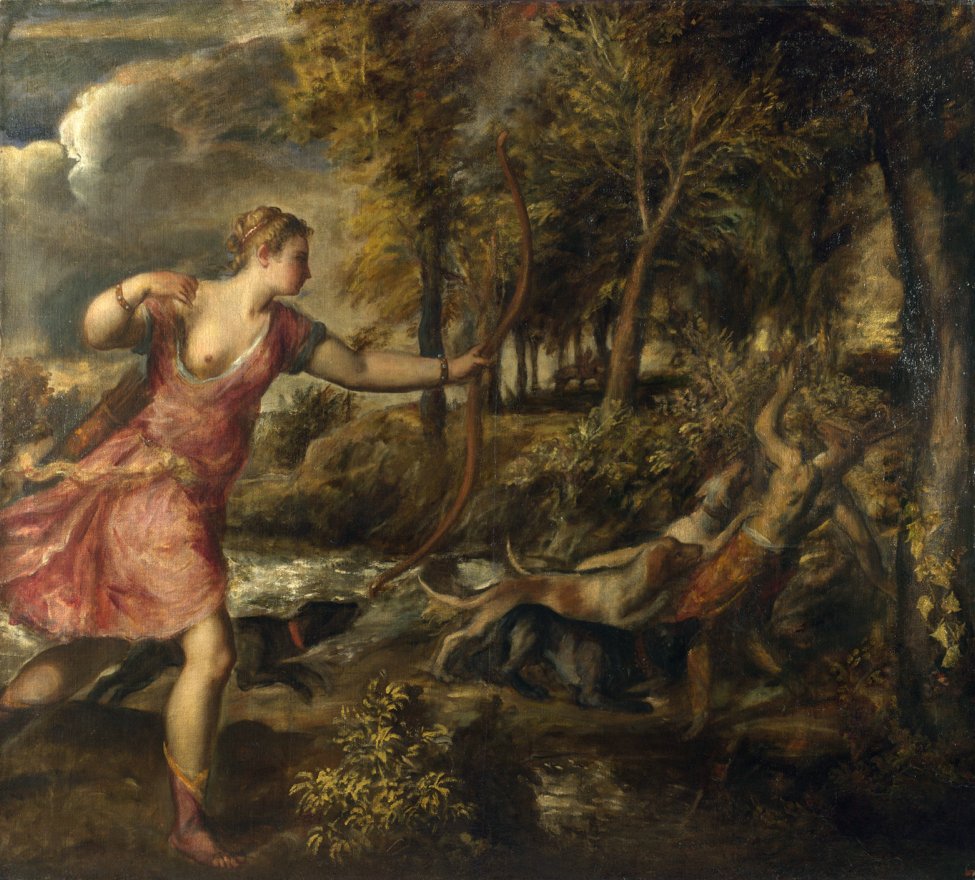
The Death of Actaeon by Titian (between 1559 and 1575) in the National Gallery in London
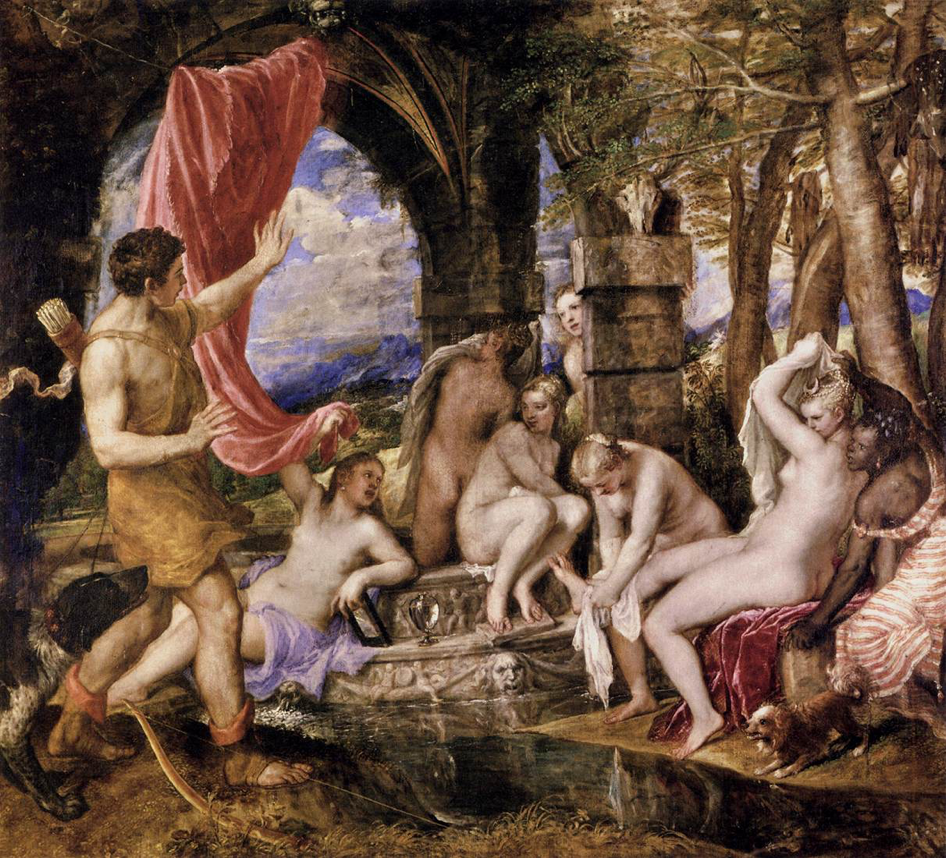
Diana and Actaeon by Titian (between 1556 and 1559) in the Scottish National Gallery in Edinburgh
Artemis’ Origins
Artemis seems to have originally been a goddess of wild beasts from the Near East. She was similar to the goddess Potnia Therōn (Lady of Wild Animals), with whom she later became identified. She also has strong connections to the Gorgon, Medusa. Many of the important figures among her retinue of nymphs are believed to be local goddesses who were similar in function to Artemis.
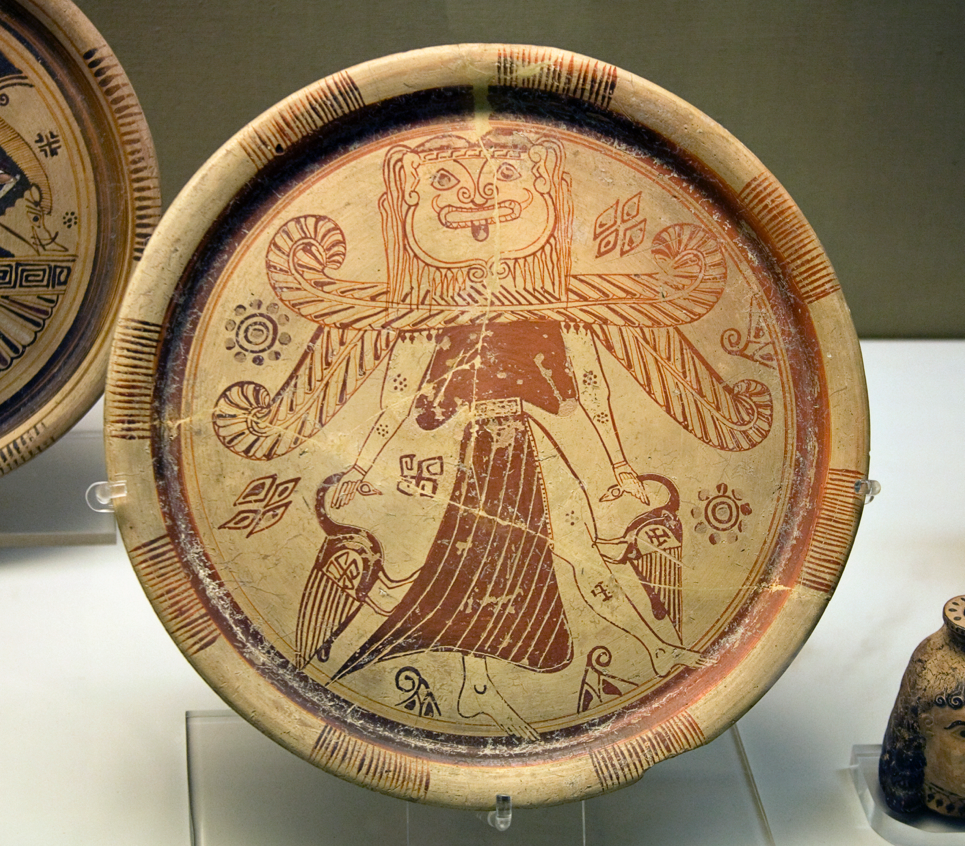
Potnia Theron with a gorgon’s head on a plate in the British Museum
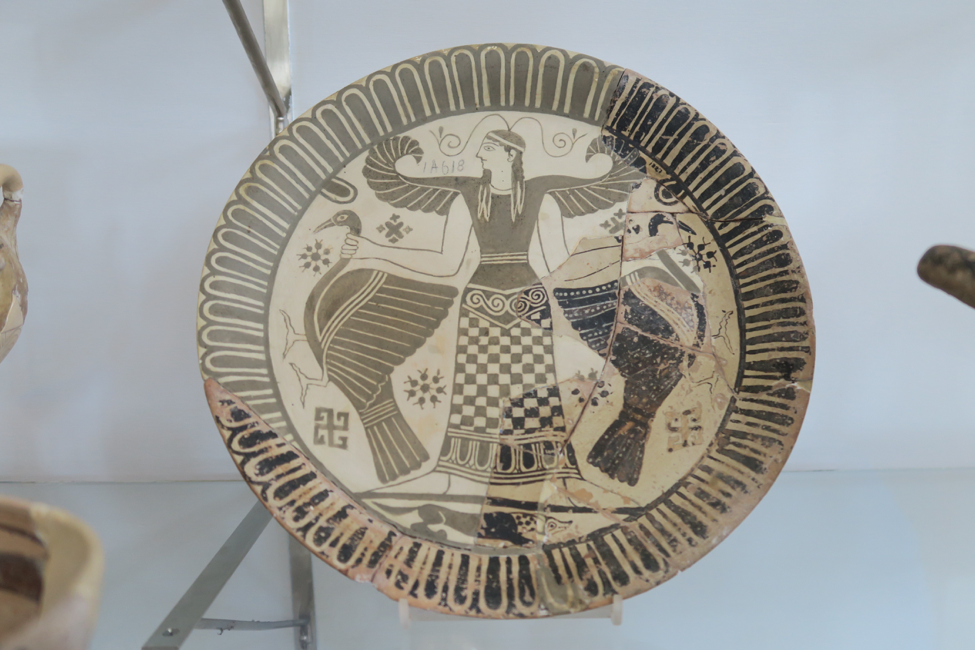
A plate depicting Potnia Theron with a woman’s head in the Mykonos Museum

